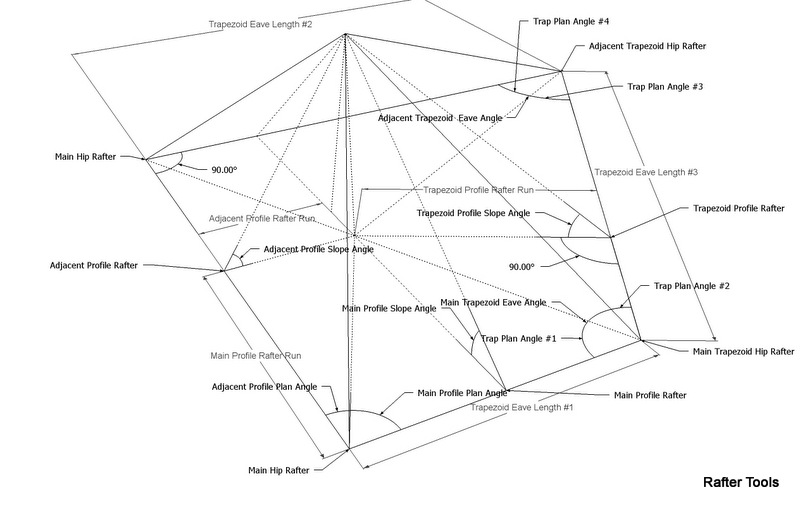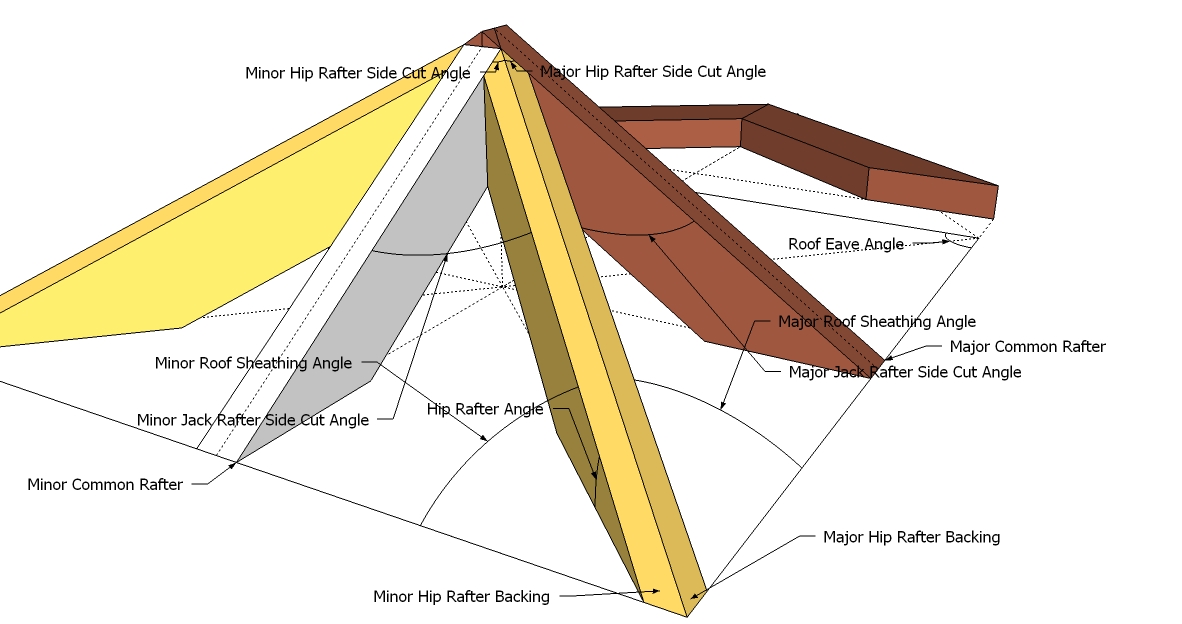Roof Framing Geometry Blog
See my Roof Framing Geometry Blog for more information on Trapezoidal Rafters.

Click on the image above to open a bigger version of this image in a new window.
Main Profile Slope Angle for Principal Rafter
Select the input type from the input menu, Imperial/English Inch base 12 —— default, enter roof pitches from 1—24
like 8 for an 8:12 pitched roof, Metric 300mm base, enter millimeters like 200 for a 33.69007° roof pitch angle,
Decimal Inch base 10 —— enter base 10 decimal numbers like 5.7735 for a 30° roof pitch angle,
Degrees input —— use any roof angle in degrees like 33.69007°
Main Profile Rafter Run for Principal Rafter
Enter the common rafter run of the profile rafter.
Main Trapezoid Eave Angle
This is the corner angle of the building. The Trapezoid Eave Angle must be equal to or grater than 90°.
Trapezoid Eave Length #1
This is the length one side of the Trapezoid ground plan. This length is equal to the Adjacent rafter run * 2.
The input mode selection can be completely different from the output mode is
- Input Menu Mode
- Imperial/English Inch base 12 —— default.. use American standard pitches over 12.
- Metric 300mm base —— 300mm is 11.81102 inches, similar usage to the American framing squares printed in inches.
- Decimal Inch base 10 —— use this option when working with tangents or using the Chappell Master Framing Square multiply the tangent of the angle by 10
- Degrees
The output mode selection can be completely different from the input mode is
- Output Menu Mode
- Imperial/English Inch base 12 —— default.. use American standard pitches over 12.
- Metric 300mm base —— 300mm is 11.81102 inches, similar usage to the American framing squares.
- Decimal Inch base 10 —— use this option when working with tangents or using the Chappell Master Framing Square
